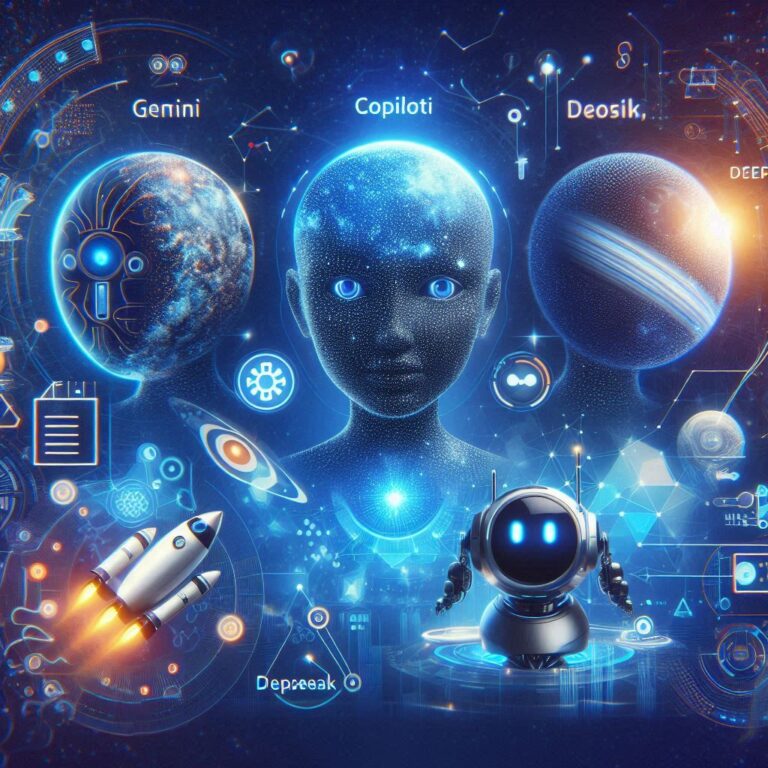Gems for Google Gemini: Are They the Future of AI Customisation or Just a Shiny Distraction?
Right, let’s dive into the world of Google Gemini and these things called “Gems”. Now, I know what you might be thinking: “Gems? Sounds a bit… mystical, doesn’t it?” And yeah, I kind of agree! But bear with me, because they might just be a game-changer (or, you know, just another bit of tech we’ll all forget about in six months).
So, What Exactly Are Gems?
Okay, so imagine you’ve got this super-smart AI, right? That’s Gemini. It can do all sorts of clever stuff – write code, analyse data, translate languages… the whole shebang. But what if you want it to be really good at one specific thing? Like, really good at writing marketing copy, or really good at helping you plan your meals?
That’s where Gems come in. Think of them as custom versions of Gemini, pre-trained and optimised for particular tasks. Google’s calling them “optimised models,” which is a bit of a mouthful, isn’t it? I prefer “Gem.” It’s snappier. Anyway, these Gems are supposed to be experts in their chosen field, offering better performance and more relevant results than the general-purpose Gemini.
Why Do We Need ‘Em?
“But Jim,” I hear you cry (or maybe you’re just thinking it), “isn’t Gemini already pretty darn good? Why do we need to faff about with Gems?”
Good question! And the answer, as far as I can tell, boils down to specialisation. Gemini is like a super-talented all-rounder. It can play football, bake a cake, and write a symphony… but it might not be the absolute best at any one of those things.
Gems, on the other hand, are like those specialist athletes. They might only be able to do one thing, but they do it incredibly well. So, if you’re a marketing guru, a “Copywriting Gem” could be your new best friend, churning out killer ad copy faster than you can say “conversion rate.” Or if you’re like me and struggle to come up with interesting and healthy meals (my diet mainly consists of beige food), a “Meal Planning Gem” could be a lifesaver.
How Can They Help?
Right, let’s get down to the nitty-gritty. How can these Gems actually make our lives easier? Well, the possibilities are pretty exciting, to be honest. Here are a few ideas that have been buzzing around my head:
- Boosting Productivity: Imagine having a Gem that can automate all those tedious tasks you hate. Scheduling meetings, writing reports, answering emails… boom! Suddenly, you’ve got hours back in your day to do the stuff you actually enjoy. (Like, you know, finally finishing that DIY project you started three years ago.)
- Unleashing Creativity: Stuck in a creative rut? A Gem could help you brainstorm ideas, generate different versions of your work, or even create entirely new pieces of art or music. I could really use a “Plot Twist Gem” for my book at the moment.
- Personalising Experiences: Gems could learn your individual preferences and tailor information and services to your specific needs. Think of a “Travel Gem” that plans your perfect holiday, taking into account your budget, interests, and tolerance for dodgy street food.
- Democratising Expertise: This is a big one. Gems could make specialised knowledge and skills accessible to everyone. Want to learn a new language? There’s a Gem for that. Need help with legal advice? Yep, there’s a Gem for that too. It could level the playing field, giving everyone access to the kind of expertise that used to be the preserve of a select few.
Setting Up and Using Gems: A Rough Guide (Because It’s Still Early Days)
Okay, so how do you actually use these magical Gems? Well, here’s the thing: it’s all a bit new and evolving. Google is still rolling out the details, and access might be limited at first. But from what I’ve gathered, here’s the general idea:
- Accessing the Gem Store (or whatever they end up calling it): Presumably, there will be some kind of marketplace or platform where you can browse and select the Gems you want. Think of it like an app store, but for AI. (I wonder if there will be Gem reviews? “This ‘Financial Advice Gem’ told me to invest in tulips. One star.”)
- Customisation (Maybe): Depending on the Gem, you might be able to tweak it further to suit your specific needs. This could involve providing it with training data, setting preferences, or adjusting parameters. (Imagine being able to tell your “Personal Trainer Gem” that you absolutely refuse to do burpees. Bliss.)
- Integration: The idea is that Gems will integrate seamlessly with your existing tools and workflows. So, you could access your “Writing Gem” directly from your word processor, or your “Coding Gem” from your development environment.
- Usage-Based Pricing (Possibly): It’s likely that there will be some kind of pricing model for using Gems. This could be subscription-based, pay-per-use, or a combination of both. (Let’s hope they offer a “Bargain Hunter Gem” to help us find the best deals!)
Best Practices: A Few Thoughts (and a Bit of Wishful Thinking)
Since Gems are still pretty new, “best practices” are a bit of a moving target. But here are a few things I reckon will be important:
- Start Small: Don’t try to overhaul your entire workflow with Gems all at once. Begin with one or two that address your biggest pain points and gradually expand from there. (Baby steps, people, baby steps.)
- Provide Clear Instructions: Gems are powerful, but they’re not mind-readers (yet!). The more specific and detailed your instructions, the better the results will be. (Think of it like explaining something to me – you need to be really clear.)
- Iterate and Refine: Don’t be afraid to experiment and adjust your approach as you go. AI is constantly learning, and so should you. (It’s all part of the fun, right?)
- Be Mindful of Bias: AI models can sometimes reflect the biases present in the data they’re trained on. It’s important to be aware of this and to critically evaluate the output of your Gems. (We don’t want any racist or sexist Gems running around, do we?)
- Don’t Panic: Look, AI is evolving at a rapid pace, and it can be a bit overwhelming. But try not to get too freaked out. Gems are tools, and like any tool, they can be used for good or ill. It’s up to us to use them responsibly and ethically. (And to keep an eye on them, just in case they start developing a taste for world domination.)
The Future of Gemini and Gems: My Two Pence
(Horizontal rule to separate sections)
Where is all this heading? Well, if you ask me (and you kind of did by reading this far), I think Gems have the potential to be a real game-changer. They could make AI more accessible, more useful, and more tailored to our individual needs.
But there are also challenges. We need to make sure that Gems are developed and used responsibly, that they’re fair and unbiased, and that they don’t lead to job displacement or other negative consequences. (And we need to come up with a better name than “Gems.” Seriously, Google, what were you thinking?)
Ultimately, the future of Gemini and Gems is in our hands. It’s up to us to shape it, to guide it, and to make sure that AI benefits everyone, not just a select few. (And maybe, just maybe, it’ll finally teach me how to cook something other than toast.)
So, what do you think? Are you excited about Gems? Terrified? Mildly intrigued but mostly confused? Let me know in the comments below! And if you’ve got any brilliant ideas for a better name, I’m all ears.







